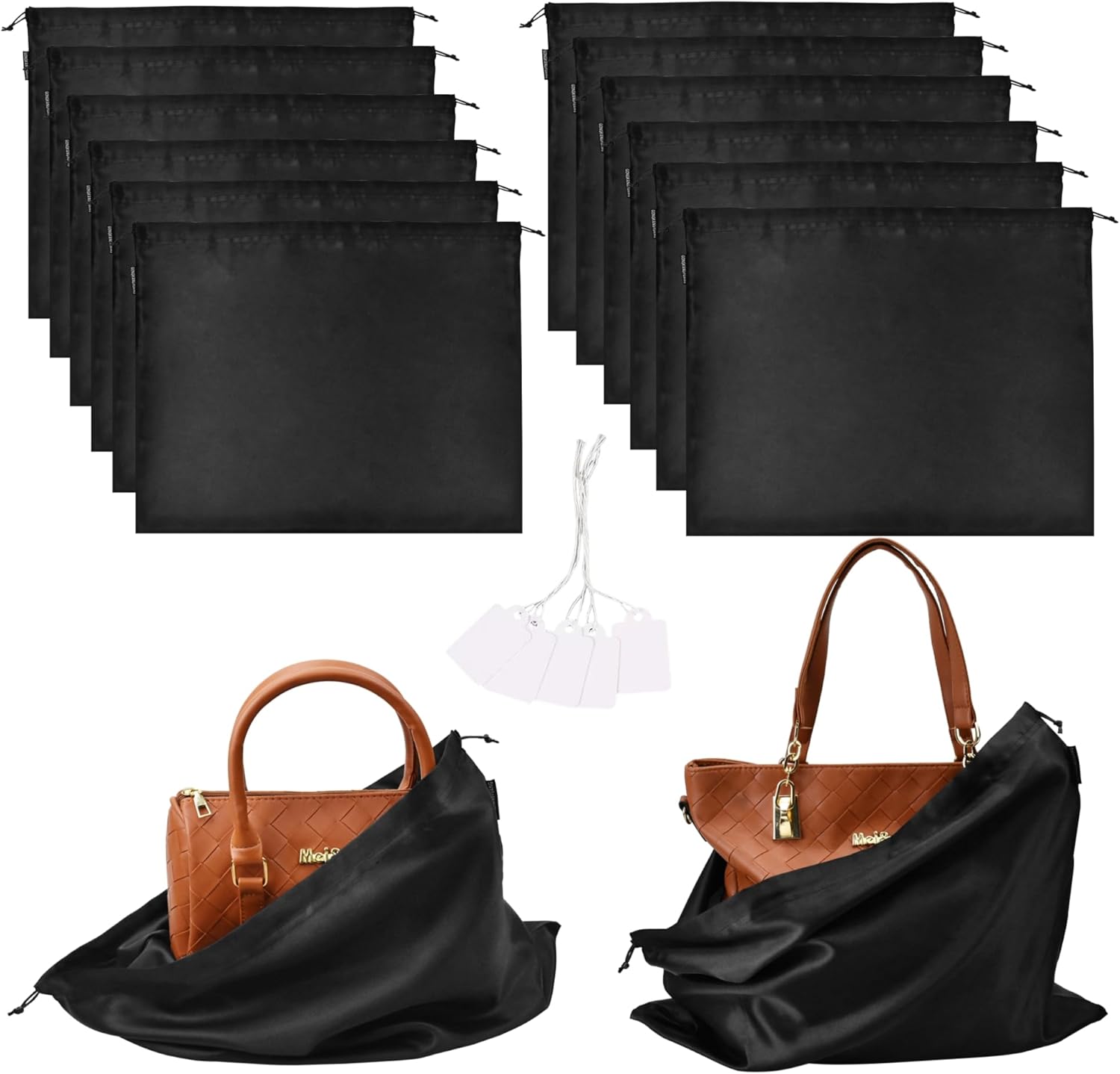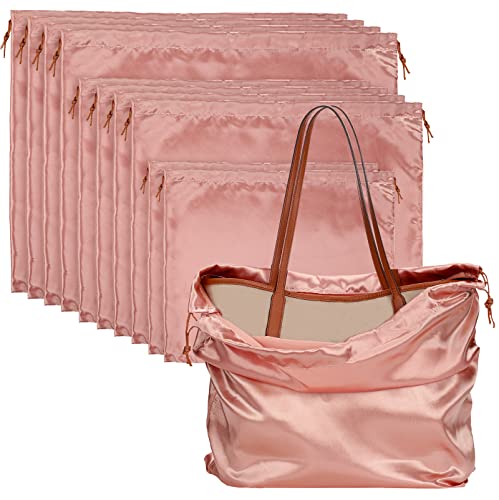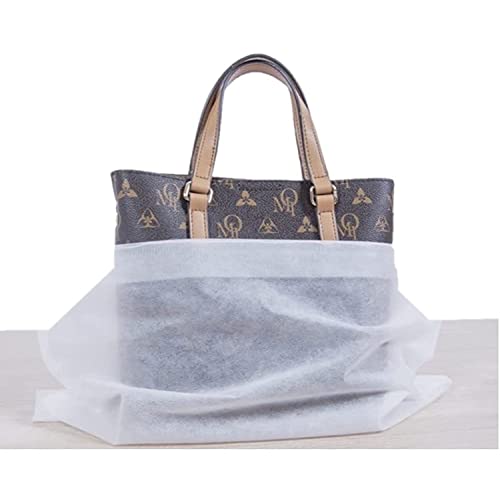A dust bag is a protective pouch, often made of cotton, designed to shield your handbag from dust, scratches, and sunlight, preserving its condition.

Table of Contents
- Understanding the Purpose of a Handbag Dust Bag
- The Critical Reasons Your Handbag Needs a Dust Bag
- How to Properly Use a Dust Bag for Maximum Protection
- What Makes an Ideal Dust Bag? Materials and Features
- Common Questions About Handbag Storage

Understanding the Purpose of a Handbag Dust Bag
A handbag dust bag, also known as a purse cover or storage pouch, is more than just a simple accessory that comes with a new purchase. It is a fundamental tool for preserving the quality, appearance, and value of your handbag. When you invest in a finely crafted piece, especially one made from genuine leather, the dust bag serves as its first line of defense against a host of environmental factors that can degrade the material over time. It functions as a breathable barrier, safeguarding the bag when it’s not in use, whether it’s stored for a day or a season.

Think of it as essential maintenance. Just as you would care for a fine garment or a pair of quality shoes, a handbag requires proper storage to maintain its structure, finish, and color. The dust bag is specifically engineered for this purpose. It creates a micro-environment that protects from immediate threats like dust and spills while preventing long-term damage from humidity and light exposure. Using a dust bag is a clear signal that you value your accessory and are committed to extending its lifespan, ensuring it remains a beautiful and functional part of your collection for years.
The Critical Reasons Your Handbag Needs a Dust Bag
The importance of using a dust bag cannot be overstated, particularly for luxury or leather handbags. Each benefit directly contributes to the longevity and pristine condition of your investment. Neglecting this simple step can lead to irreversible damage that diminishes both the bag’s beauty and its worth.
Shields from Dust, Dirt, and Debris
The most obvious function is right in the name. When left exposed on a shelf or in a closet, a handbag inevitably collects a layer of dust. These airborne particles are more than just an aesthetic nuisance; they can contain microscopic abrasive elements that settle into the grain of leather or the weave of fabric. Over time, this buildup can dull the finish, cause discoloration, and even lead to the breakdown of the material’s surface. A dust bag creates a simple, effective barrier, keeping your purse clean and ready for its next outing.
Prevents Scratches and Scuffs
Handbags are often stored next to other items, including other purses with prominent hardware like buckles, zippers, and studs. Without a protective layer, accidental contact can easily lead to scratches, scuffs, or indentations on delicate materials like lambskin or patent leather. The soft fabric of a dust bag provides a crucial buffer, ensuring your handbag’s smooth surface remains unblemished. This protection is vital for maintaining a flawless appearance, especially on structured and high-gloss finishes.
Guards Against Color Transfer
One of the most devastating forms of damage is color transfer. This occurs when a deeply pigmented item (like a dark denim purse, a brightly colored suede bag, or even the wood varnish from a shelf) rubs against a lighter-colored handbag. The dye can bleed onto the light surface, creating a permanent stain that is often impossible to remove. A dust bag isolates each handbag, creating a neutral barrier that completely prevents dyes from migrating from one item to another. This is particularly crucial for white, cream, or pastel-colored purses.
Blocks Harmful Sunlight and Fading
Direct or even indirect sunlight contains UV rays that act like a bleaching agent. Prolonged exposure can cause the vibrant dyes in leather and fabric to fade unevenly, resulting in a patchy, sun-damaged appearance. A dust bag, particularly an opaque one, serves as a shield against light exposure. By storing your bag inside its protective cover and away from windows, you preserve its original, rich coloring and prevent the material from becoming dry and brittle due to sun damage.
Promotes Air Circulation and Prevents Mold
Perhaps the most critical function for leather goods is breathability. Leather is a natural material that needs to breathe to maintain its supple texture. Storing a handbag in a plastic bag or an airtight container is a critical mistake, as it traps moisture. This humid environment is the perfect breeding ground for mold and mildew, which can permanently stain and damage the leather, creating a musty odor that is difficult to eliminate. A proper dust bag made from a natural, breathable fabric like cotton allows air to circulate freely, wicking away ambient moisture and keeping the material healthy and stable.
How to Properly Use a Dust Bag for Maximum Protection
Simply owning a dust bag is not enough; using it correctly is key to effective preservation. Following a few simple steps will ensure your handbag is stored in optimal conditions, safeguarding its shape, structure, and surface.
Prepare Your Handbag for Storage
Before storing your bag, always take a moment to prepare it. First, completely empty its contents to remove any weight that could strain the handles or distort the shape. Check all pockets for items like pens, which could leak, or cosmetics, which could melt or spill. Afterward, give the handbag a gentle wipe-down with a clean, dry cloth to remove any surface dust or oils from handling. For leather bags, this is also a good time to apply a quality leather conditioner if it’s due for one.
Maintain the Handbag’s Shape
An empty handbag can collapse under its own weight, leading to creases and folds that can become permanent over time. To prevent this, you must maintain its structure. Stuff the bag with a soft, acid-free material. Specialized purse pillows or shapers are ideal, but you can also use bundled acid-free tissue paper or even bubble wrap. *Avoid using newspaper*, as the ink can easily transfer onto the bag’s interior lining. Be sure to stuff it firmly enough to hold its shape but not so much that you are stretching the seams.
Correctly Place it in the Dust Bag
Once the bag is clean and stuffed, gently slide it into its dust bag. If the bag has a chain or a prominent strap, consider wrapping it in a small piece of tissue paper before tucking it inside or alongside the bag to prevent it from indenting the exterior. Cinch the drawstring closure, but don’t seal it completely airtight. The goal is to cover the bag fully while still allowing for minimal air exchange. Ensure the bag sits upright and is not compressed inside the pouch.
Choose the Right Storage Location
Where you store the protected handbag is just as important as the bag it’s in. The ideal location is a cool, dry, and dark place with stable temperature and humidity. A dedicated closet shelf is perfect. Avoid storing valuable handbags in basements or attics, where extreme temperature fluctuations and high humidity can promote mildew growth, even with a dust bag. Give each bag enough space so it is not squashed by other items.
What Makes an Ideal Dust Bag? Materials and Features
Not all dust bags are created equal. The material and design significantly impact its effectiveness. An ideal dust bag should be made from a soft, natural, and breathable fabric. The most common and highly recommended materials are 100% cotton, flannel, and muslin. These fabrics are gentle enough not to scratch delicate hardware or finishes, and their natural weave allows air to pass through, preventing moisture buildup. The size should be large enough to comfortably enclose the entire handbag without folding or compressing it, and a drawstring closure is preferred for its ease of use and secure coverage.
At Beld Turan Leather, we understand that a handcrafted full-grain leather bag is an investment. That’s why our handbags come with high-quality, breathable cotton dust bags designed to preserve their beauty for years to come. We believe that proper care starts with proper storage, and providing the right tool for the job is part of our commitment to quality and customer satisfaction.
Understanding the difference in materials can help you make better storage choices. Here is a comparison of common storage materials:
| Material | Breathability | Protection Level | Recommendation |
|---|---|---|---|
| Cotton / Flannel | High | Excellent | Ideal for long-term storage |
| Polyester / Nylon | Low | Moderate | Acceptable for short-term use |
| Plastic | None | Poor (Risk of Damage) | Avoid at all costs |
Common Questions About Handbag Storage
Proper handbag care often raises a few common questions. Addressing these concerns can help you build the best storage habits to protect your entire collection.
What if My Handbag Didn’t Come with a Dust Bag?
If your handbag did not include an original dust bag, you have excellent alternatives. The best and most accessible option is a 100% cotton pillowcase. Choose a white or light-neutral color to eliminate any risk of dye transfer. A cotton pillowcase offers the same breathability and soft protection as a purpose-made dust bag. You can also purchase dust bags separately from various retailers, ensuring you get the right size for each of your purses.
Can I Use a Plastic Box or Bag for Storage?
You should *never* store a handbag, especially a leather one, in a plastic bag or an airtight plastic container. Plastic is non-breathable and traps moisture against the handbag’s surface. This can lead to a host of problems, including mold, mildew, weakening of adhesives, and the “sweating” of patent leather, which causes it to become sticky and peel. Over time, the lack of air can cause leather to dry out and crack, and it may cause synthetic materials to yellow. Always opt for breathable storage solutions.
How Should I Store Multiple Handbags?
When storing a collection, give each handbag its own space. It is best to place them in their individual dust bags and arrange them upright on a shelf, much like books in a library. Avoid stacking them on top of one another, as the weight can crush the bags on the bottom and cause permanent structural damage. Leaving a small amount of space between each bag allows for better air circulation and makes it easier to access each one without disturbing the others. This organized approach not only protects your bags but also keeps your closet looking tidy and sophisticated.



